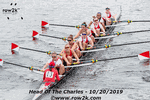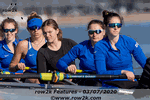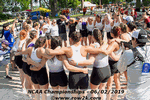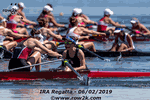Program Building Part 2 - First Year Priorities
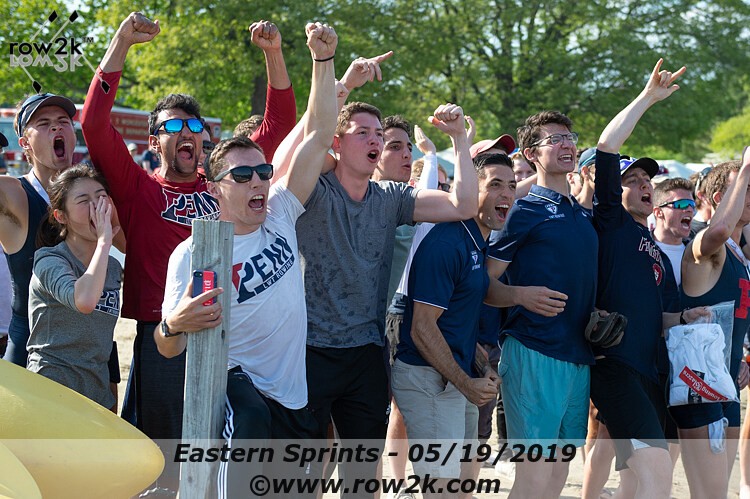
Following the cancellation of the 2020 spring racing season, row2k solicited the collegiate coaching community to engage in a variety of high-level topics within the profession. We submitted over sixty questions across a dozen topics and thank the coaches and staffs that found time to contribute their thoughts during this stressful time.
This week we focus on the topic of Program Building with the following question:
WHEN STARTING WITH A NEW TEAM, WHAT WERE SOME OF YOUR TOP PRIORITIES FOR THE TEAM TO ACCOMPLISH IN THE FIRST YEAR?
COLIN FARRELL – PENN LIGHTWEIGHT MEN
When I took over at Penn, I really felt like the first job was all about education. We needed to learn what the standards were in the lightweight league for success. Everyone knew the goal was to win, but we worked to map out what that would look like in all areas. And then, most importantly, we needed to learn what kind of work it would take to get there.
One of the basic things we were trying to accomplish was how we would define a successful practice and then how we would execute that successful practice. From there, it becomes about working to put two good practices together, then three, etc. The best teams have a high standard on a daily basis and work to meet that standard every day. They can gain confidence knowing that their practices are taking them where they want to go.
The other side of this was that it was also about my own education. I had to learn about Penn and our athletes. The more I could get my head around what Penn was all about, what advantages we had and what challenges the students faced, the more we could make good decisions to move the team forward.
SANDRA CHU – WILLIAM SMITH
I think a team’s priorities in a new coach’s first year will be dependent on many things, not the least of which is where the team is culturally and how much change might be required. In my first year, my number one priority was to define and build a team identity in which the team not only worked on our core values but also considered me as someone they could trust to demonstrate those values each day.
JAMIE FRANCIS – EMBRY RIDDLE
I had the opportunity to be the first coach of the varsity program here, being hired a full year prior to our first season of competition. I spent that initial year recruiting. My top priority was to make sure that I had student-athletes on the team. We’re a specialized university with a rigorous curriculum. Even with all of those challenges, my priority was to find good people who would benefit from their path including our university.

That first fall semester as a varsity program was rough from a team culture perspective. We had three groups of athletes: one group from the club team, one group of recruited freshmen, and one group of novice walk-ons. There were approximately 70 student-athletes (men & women) and two coaches. That first fall the three groups had a hard time integrating with each other and I didn’t spend enough deliberate time on our culture.
I came back from the USRowing Convention that winter with a plan to improve our situation and we ended up doing more team-building activities that spring than I had done in the whole of my coaching career. We have made incremental adjustments to how our team operates and our culture has continued to improve. Our team culture will never be perfect, but we can continue to work towards improving it.
ERIC GEHRKE – GEORGE WASHINGTON MEN
When I was starting Nashville Juniors our main focus was PROCESS above all else. We made it a hashtag before the 76ers did, I swear. We put “process” on every article of clothing, email, and boats. This means our day-to-day were two: (1) develop strong body and blade basics all the way through the year, let racing happen secondarily to that skill building, and (2) instill a strong level of ownership by the athletes about focusing on process, and let the ‘product’ be a by-product of that process.
CAMPBELL WOODS – MARIST MEN
New teams are always tough, and coaches must toe a fine line between coming in hot like the new sheriff in town versus being more tentative and doing a lot of listening and learning. No Team wants to be yelled at or put in their place (especially by a new coach they don’t know or trust yet) and I have never had great luck with the “new Sheriff” approach, so in my first few months at Marist I spent a lot of time watching and listening and learning.
I knew that the program had been much faster in the past and I wanted to gain a clear understanding of why the program hadn’t risen to that level in a while and what changes were needed to move us back in that direction. Marist is ultimately an underdog program and so we began to focus on the attitudes and attributes that make an underdog a competitor. A fighting mentality and scrappy disposition, a willingness to sacrifice for the team, a focus on consistent personal progression for the good of the team, and the development of goals that were realistic but challenging for the program in the long term.
For me, the first year of competition had less to do with where we placed but how we approached the racing. I remember we went to one of our first regattas and our senior captain got off the water after we had dogged it in the heat and said in our boat meeting that, “we just weren’t a big enough crew to compete in this head wind.” He came out of the boat that day and never went back in because this was 100% counter to the culture we were trying to build.
The first year has got to be all about finding the mindset and approach that is going to be right for you and help the team move forward. You may need to make sacrifices early on to reinforce the culture. That senior who came out of the V8 could have made us faster that year but taking him out made us a stronger crew in the long run.
ANONYMOUS HEAD COACH
I think priority number one when you enter a new team is understanding what has already been in place. It is sometimes too easy to come in and try to wipe the slate clean and enforce a personal vision. Learning how to adapt personal vision to the norms, traditions, and standards that have worked while moving away from what hasn’t worked should be a top priority.

EMILIE GROSS – NORTH CAROLINA WOMEN
As a coach, I individually have goals I would like to achieve in a first-year situation, additionally I want to align those goals to the program and team goals, so all steps are working towards the overall end product.
TODD KENNETT – CORNELL HEAVYWEIGHT MEN
Even though there is some carry over from one year to the next, every year is different and with many new topics. Even if you had the same guys return and no new athletes, things would be different so in a sense I feel every year is a new year. One of the biggest priorities is to make sure the team defines its goals, not just to say win, but to say HOW TO WORK, and HOW IMPORTANT THE ENTIRE TEAMS CONTRIBUTION is every day. What is our standard of work and dedication?!
JOHN BOYD – IONA
For us it was to recognize where we were as a women’s program and to define who we are going to be moving forward. On-the-water results were secondary to establishing our new identity as a program and we knew as coaches there would be growing pains along the way. Once buy-in occurred a funny thing happened; on the water results improved.
BART THOMPSON – ADRIAN
For me, my team was truly in its first year of existence when I started, so we focused on creating a culture in which our rowers expected to work hard and get better every year, every month, every day.
We also focused on creating a culture in which people show up and are excited to practice because they are surrounded by a family that cares for them and challenges them to be the best version of themselves.
If we could do the former then we’d create an expectation for continuous improvement, no matter how good we are. If we can do the latter, we’re going to create an environment that makes people want to be a part of this program because of the people.

COLIN TRUEX – UC SAN DIEGO WOMEN
When starting with a new team I think it is important to establish goals that are challenging but achievable both individually and as a team, so that at end of that first year they can look back and say, ‘we accomplished something!’ I also believe it is important to let them know what your communication style is, (direct, persuasive, collaborative, etc.) and what the daily expectations are for warm-up, equipment prep, and drills, all the way to post-practice chat. I also think it OK to let them behind the curtain a little bit and get to know you as a person; your background, likes/dislikes, and experiences. It is inevitable that your natural personality will shine through as you coach so you might as well let them see it.
ALICEA STRODEL – MINNESOTA WOMEN
Build relationships, clearly define our team values and express my expectations.
BRIAN PERKINS – TEMPLE MEN
When starting with a new team I believe that a coach needs to know the history of that team (or if a new team, create one!). Have the athletes believe that the DNA of the distant alumni is still in the boathouse and it is their job to live up to those values.
YAZ FAROOQ – WASHINGTON WOMEN
When I started at Washington the first goal was to dig into what it meant to row out of love for one another, instead of focusing on beating other teams. That starts with building one another up within your team and genuinely caring about how each person is contributing regardless of the boat they are in. We started with genuinely respecting our opponents and recognizing that we, as collegiate women rowers, share a common bond and love for our sport. Then, we focused on making each race about what we could create together on the water, within each boat--and across all boats--to create something extraordinary, even magical, as a complete team.
As an Olympian, and in my conversations with other Olympians, there is a common thread. Regardless of your thoughts about your opponents, when you back into the starting blocks in the Olympic final, you are only thinking about putting your best race out there, not about taking someone out. I feel the same way about the NCAA’s. Last year’s final had five teams with an equal chance of winning the Championship. It is amazing how competitive women’s rowing has become. We felt truly fortunate to be a part of that. We respected every boat in each of the finals and knew it would take our best race to contend, much less win.
What I love about NCAA rowing--in a completely different way than when I was on the National Team--is that the end result hinges on the entire team’s performance. Everyone is contributing to the success. For example, it was our 3rd varsity eight that broke the 3-way tie for the Pac-12 Championship last year. I know that every person in that boat knew that they mattered on that day--and they didn’t even know that the Championship was riding on their race when they came down the course.
KEMP SAVAGE – EASTERN MICHIGAN
The first thing is to establish the expectation of how hard we are going to work each day and to foster a climate of aggressive friendly competition.
LEE RUMPF – GEORGETOWN LIGHTWEIGHT MEN
There are four important steps in starting (or restarting) a program and they are as follows:
1) Create a unique identity. This can be visual, cultural, verbal, anything really that stands out and is new/different/unique/recognizable. It gives a team something to call their own and rally behind or get excited about
2) Define the rowing stroke
3) Define your standards: this can include speed, character, academics, etc.
4) Establish goals, both short term and long term
While accomplishing those first four things you should prioritize fun and belief. Fun is self-explanatory. Belief means by demonstration or example getting the team to know they can accomplish their goals.
BOB BRADY – FRANKLIN & MARSHALL
One of my biggest goals for any team is to make sure they are enjoying what they do; that they love rowing and find the process of learning, getting stronger and getting faster enjoyable. I've been involved with a number of teams over the years where rowers treated practice like a chore or like work, and when they view rowing with that mentality, you can't expect to be able to get their full buy-in or full effort to improve themselves or the team overall.

Another priority is to ask the team to set their own goals and expectations for the year. This could run the range of setting new erg PRs, performances at specific races, improving team GPAs, setting good examples for underclassmen, guidelines around weekends, and more. When the team sets these goals, the belief in them is so much greater than if they were to come directly from the coaching staff. Once they set these goals, guidelines, and expectations, I'll help them achieve or follow-through with them.
A third priority for the team is inclusivity. We strive to be an open and welcoming team for experienced rowers and novices alike, because everyone has the ability to be a contributing member of the team. But if a team culture is negative, it can be quite unwelcoming for individuals who want to join the team, or even want to continue rowing with the team if they're on varsity.
These three areas I think are essential to developing a productive team culture that gets people to buy-in to a program, and of course, along the way we are still training hard but training and developing a team culture can be done in conjunction.
ETHAN SHOEMAKER – STETSON
For me, starting with a new team thus far in my career meant taking over teams that were struggling. So, when I took over at Space Coast Crew in 2012, or when I started with Stetson University in 2017, the priorities we set about to accomplish in the first year were not easily quantifiable. We didn’t set out to win specific races or attain a certain number of athletes in the first year at either team.
At Space Coast Crew, our first priority was to create a community that people wanted to be a part of. This meant spending a lot of time with athletes, parents and board members vision-setting and team building. We had to make tough decisions in that first year, but we knew it was all with the intent of creating an inviting community at our club.
At Stetson the first priority was to transform how the athletes viewed themselves. They were a Division I varsity team that operated and presented itself as a club. We prioritized doing things “like a varsity team”. What we were really saying was, “the standards are going way up.” Once the athletes at Stetson saw themselves as varsity athletes, then everything else started to fall into place.
MARLEE BLUE – WASHINGTON WOMEN
Our two main goals are to establish a love for each other, and a love for pulling our absolute hardest. These go hand in hand because only by digging deep for each other and dedicating the effort to people they love may they truly find out how hard they can pull and how much one can love giving their absolute all. This is why team culture is so essential, for it is as much about what you do in the last 500 of the race as it is about how you treat each other on the weekend.
I know for a fact that every girl who rows for Washington for four years can say that there were moments during races that they were only able to keep going, pulling and pushing because of the love and connection they felt with their teammates. That’s a victory and it's also something we believe can be taught and developed. Team culture is not something that one “establishes” then just carries over. It is worked towards every single day, over four years.
STEVE GLADSTONE - YALE HEAVYWEIGHT MEN
I'll tell you how I've articulated it, both when I arrived at Cal, and here at Yale more recently. I said to the group that my arrival as the head coach was in and of itself not going to usher in automatic success on the racecourse. There's a level of expertise that coaches bring in general, but ultimately that expertise has no value unless you're individually driven and committed to the actualization of those concepts. So ultimately, it's a partnership, and the athletes are going to be the ones that ultimately determine who makes the stand or if they make the stand. And that's just the way it is.
If you're a coach, you certainly could encourage, support, and tell the truth about what needs to be done to bring a situation forward. But ultimately the athletes will determine whether the whole process works. And once a significant portion of the squad understands that and understand that they have, if you will, the power to bring about the results in conjunction with the coach, there's real durability and strength that will take place on the racecourse to reflect their results.
ANONYMOUS HEAD COACH
The biggest thing was an establishment of trust. We need to be consistent as coaches and follow through on communication and our actions. If we say we are going to do something, we do it. We also want to find ways to infuse some confidence that the team has an ability to perform well and remind them of the good they do. But building trust and showing that the coaches and athletes are indeed all on one team was priority number one.
If you enjoy and rely on row2k, we need your help to be able to keep doing all this. Though row2k sometimes looks like a big, outside-funded operation, it mainly runs on enthusiasm and grit. Help us keep it coming, thank you! Learn more.
Comments | Log in to comment |
There are no Comments yet
| |
- Bont Rowing
- Calm Waters Rowing
- Concept 2
- Craftsbury Sculling
- The Crew Classic
- CrewLAB
- Croker
- Durham Boat Co.
- Empacher
- Faster Masters
- Filippi
- Fluidesign
- h2row.net
- HUDSON
- Live2Row Studios
- Nielsen-Kellerman
- Oak Ridge RA
- Peinert Boat Works
- Pocock Racing Shells
- Race1 USA
- RowKraft
- Rubini Jewelers
- Vespoli USA
- WinTech Racing
- Bont Rowing
- Calm Waters Rowing
- Concept 2
- Craftsbury Sculling
- The Crew Classic
- CrewLAB
- Croker
- Durham Boat Co.
- Empacher
- Faster Masters
- Filippi
- Fluidesign
- h2row.net
- HUDSON
- Live2Row Studios
- Nielsen-Kellerman
- Oak Ridge RA
- Peinert Boat Works
- Pocock Racing Shells
- Race1 USA
- RowKraft
- Rubini Jewelers
- Vespoli USA
- WinTech Racing



